Georgina - spectacular plants with a wide color gamut of buds and a long period of flowering. Growing Georgin in Siberia has its own characteristics and secrets. Special climatic conditions require the flowerguards of knowledge of key moments of agricultural landing and care for many years of culture. When and how to plant panberry dahlia into the soil? What way is better to breed a plant? When to remove Dahlia in Siberia? Replies to these and many other questions - read in this selection of material.
Georgina in Siberia, Botanical Help
- The genus Georgine belongs to the Astrovy family (comprehensive), which includes a lot (more than 40 species) of beautifully mixing perennial plants.
- In the height, the plant can reach up to 2-2.5 m. Stems are a reprehension, branched, hollow. They can be smooth or slightly rough, depending on the species.
- The leaves of dahlias are simple, minor dissected, there are opposite. The length of the sheet plate varies from 10 to 40 cm, and maybe as well as the stem, slightly pubescent. The color of the leaf is predominantly green, although instances can occur with pink or brown color.
- Noteworthy perennial root, which has the form of fleshy thickened tubers.
- Under the conditions of Siberia, the green above-ground part of Georgin dies off annually in the fall, so tubers need extraction from the soil and storage until spring. Thus, dahlias in Siberia need an annual landing. Although in his homeland, in Latin America, Georgina is a perennial and do not need to dig.
- Inflorescence - a lush basket with tongueblock large flowers on the edge and tubular in the middle. The color of the inflorescence can be of different shades, monophonic or motley, the sizes of the "heads" are also varied. The inflorescence has a bowl-like wrapper from several, who have grown up at the base, rows of green leaves.
- Small seeds are matured in the dry type of fetus - seed, and retain their germination of no more than 3 years.
Georgina, interesting facts
- The historical homeland colors of Georgin is considered to be Central America, namely the Republic of Guatemala and Mexico. Interesting is the fact that local Indians used dahlias to food and as a medicine from epilepsy, and the hollow stem served as an aborigine respiratory tube to Europe, the Spanish navigators in the 18th century.
- A beautiful flower actually has two names: "Dalia" (in honor of the Swedish botanist A. Daly) and "Georgin" (named Peterbourg Naturalist I.G. Georgi). But the indigenous inhabitants of Mexico called Georgina "Chichipatl" or "Kokoshetl", which in both cases is translated as a "flower with a hollow stem".
- Many flowerflowers are often confused, how to correctly call a plant: Georgina or Georgine? So, the female form of the name "Georgin" is officially recognized in Botanic.
- When Georgina appeared in the Botanical Gardens of Europe, the real "fashion fever" began on the opportunity to have spectacular spherical terry flowers. The fashionable novelty was very expensive and was only available to the richest houses. So, at that time, a rich collection of Georgin was famous, collected in the garden at Josephine - Napoleon's wife.
- To date, the most types and varieties of Georgin can be found in countries like Scotland and Canada.
Georgina in Siberia, Plant Application
- Spectacular diverse dahlias are indispensable in garden-park areas or on household flower beds.
- Depending on the shape and type of dahlia, landscape designers decorated the landing composition in different ways, combining them with other blooming plants.
- The lowest varieties of Georgin plant on the foregrounds along the gardens or borders. Also, low bushes, dahlias are used to create massive flower beds - platforms or mixtures.
- Tall grades Georgine would be more appropriate to look like on the rear plans that do not cover other flowers.
- Georgians look beautiful and decorative both in single landings and in group compositions. Solitary landings are more suitable for large-flowered abundant flowering varieties of Georgin.
- A varieties of dahlias with long and strong blooms are used on the cut and for the preparation of bouquets.
Georgina in Siberia, varieties and varieties
Currently, several tens of thousands of varieties of Georgian hybrids are derived. All varieties are registered in the so-called. Royal Gardening Society. Naturally, such a huge amount of varieties require a special classification.
According to the primary classification, all dahlias on morphological features were divided into 10 groups:
- nexle (inflorescence diameter up to 10-15 cm, consists of several rows of simple petals);
- spherical (inflorescences are large, spherical shapes);
- anemonovoid (inflorescences resemble anemone);
- pomponny (spherical small inflorescences resembling pumps);
- the collar (inflorescence up to 15 cm in diameter, the tongue flowers of different height are located in 2 rows, forming the "collar");
- cactus (terry inflorescences with the outwards twisted with pipes);
- pionic (semi-world inflorescences with tongue flowers located in several rows);
- semi cacti;
- decorative (wide tongue flowers are located in the inflorescence spiral or tilted);
- mixed (mixed types of inflorescences).
In the USSR, the previous classification was improved and adopted by a new one, including 12 groups: single-row, spheroid, anemonevoid, pomponny, collar, decorative, pionic, nymphyshi (large terry inflorescences with inside with tongue flowers), direct cactus, mixed, semi-paste and cactus with curved petals.
Currently, these groups are practically not used, giving way to a variety of hybrid varieties, which are already more than 15,000. And all hybrid forms are combined and known as the "Georgina Cultural" ("Georgina change").
Georgina in Siberia, landing features
Considering the thermal lobility of the plant, dahlias have some features of planting that allow plants to be favorably developed and blossomed even in such cold regions as Siberia.
Consider the key regulations of the selection of the site, the preparation of the soil and tuber of the plant to landing in the conditions of the Siberian climate.
Terms of landing Georgin in Siberia
- First of all, it is necessary to choose the most suitable place for landing the thermo-loving dahlias. It should be sunny, well-warmed and protected, from gusty winds or drafts, terrain. The best choice will be the southern side of any building or fence. At the same time, the sun should illuminate the plant at least 6 hours a day. If there are large trees near the planned area, giving a thick shadow - in such conditions of small illumination, dahlias may not be bloated at all. Milnovy, often flooded or wetlands for growing dahlias are not suitable, since the tubers of the plants do not endure the excess of moisture and boot.
- As you know, dahlias deplete the soil, therefore, planting flowers in the same place for several years in a row can not be.
- The perennial is not particularly demanding to soil, but the best for Georgin is considered fertile, loose and water permeable loams with acidity level of about 6.5-6.7. The culture will also grow well on the soil fertilized by humus. Increase the water permeability of the soil helps in the soil of river sand or the structure of the drainage layer of gravel or small slag. Drainage prevents water stagnation, which means that the occurrence of mold and rot the roots of dahlia. In order to reduce the acidity of the soil - a haired lime is added to the soil to increase - peat make.
- If there is a close occurrence of groundwater in bed, in addition to the drainage layer, there is a kind of exaltation from the soil, which will contribute to raising the dahrine tubers. At the same time, it is impossible to forget about the "shelter" of the plants from the northern winds, for example, by adjacent trees or some facilities. Good results for the middle strip of Russia gives landing dahlia under the south or south-eastern bias.
- In Siberia, Georgina begins to plant in the first half of June, provided that they are pre-enraged. If the tubers are planted in open ground before the specified period - you should take care of the shelter, according to the type of greenhouse. When landing on the garden, you should navigate the weather conditions of a particular region. Soil must warm up to +10 0C, air, at least, up to +20 0WITH.
Preparation of tubers Georgin to landing
- In the conditions of Siberia, Georgina planted into the soil already intended, i.e., those whose green shoots appeared on the tubers with the first leaves. So, it is possible to provide the flower a good start to further development.
- For this tuber, about 3-3.5 weeks before the expected plant disembarking in open ground, get out of the basement and planted in a greenhouse or a wide flower pot. Before landing, you should carefully examine the tubers and remove the fired sections.
- Good results gives the preset processing of dahlias in a weak solution of manganese. For this, tubers are poured by a disinfectant solution of potassium permanganate for 30-60 minutes.
- Soil for planting tubers should be loose and nutritious. You can use a mixture of turf, peat, small sawdust and sand.
- For planting, the tubers are placed in the prepared container and fall asleep by the soil mixture. The root neck is left open. The georgy root container is placed in a warm privacy.
- Periodically, moisturizing the soil (in no means poured water), after 1-1.5 weeks, the first sprouts will be noticeable - eyes. After germination, the plant is rearranged into a bright place.
- There are no more than 2 kidney players on the tubers. The rest of the shoots should be removed, since a large number of them will significantly weaken the growth of the main shoots.
- Sprouted dahlia before landing in open primer must temper and take out from time to time. The residence time of seedlings in the fresh air should be gradually increased.
- Sprouted tubers carefully remove from landing capacity for landing at a permanent place.
Agrotechnology landing Georgin in Siberia
- Plot for landing Georgin should be prepared in advance. To do this, it is drunk it in the fall and the organic (compost, humus, humus) is introduced.
- In the spring, it will be enough to slightly explode the soil with robbles, after which you can cook the wells for planting tubers.
- The landing is best done on a cloudy day or in the evening so that the tubers do not have time to get sick in the sun and faster adapted in a new place.
- The depth of the landing pit is approximately equal to the height of the bayonet shovel, but more depends on the size of the landing tuber. If the tuber is single, young, enough will be shallow pits. In the case of a large bush, Georgin with many born tubers - you will have to prepare a deep and wide well.
- If the soil is not afraid of the fall, it should be done by Vienna, during the landing of Georgin. The prepared pit is added and mixed with the ground overwhelmed dung and 20-30 g of superphosphate fertilizers. In the absence of complex mineral fertilizers, you can use wood ashes rich in many nutritional elements.
- Water is poured into the landing jam, after absorbing, which lays out tubers strictly in a horizontal position to stimulate the development of young roots and renewal kidneys.
- Proper landing of tubers Georgin involves placing the root neck for 2-4 cm below the ground level. If the seedlock was obtained from the cutter or is a hybrid seedlings, it is planted with a dealer, 8-10 cm.
- During the landing, it is necessary to immediately establish a support (peg, a height of 1.5-2 m), to which the fragile stem of dahlia will subsequently be credited. If you do it later, the likelihood of damage to the dahrine tubers is great. Wooden or metal stakes are suitable as a support.
- After planting, the ground around Kusta Georgina slightly seal and water water. Gestroinated dahlias are coming around in a new place easily and quickly.
- When landing several bushes, Georgin, the distance between the plants is determined arbitrarily, depending on the plant's variety and design plan. On average, it will take about 50-70 cm between the plated copies of dahlias. Neurizuctural cutting seedlings are better to plant two in each well.
Georgina in Siberia, care characteristics
Georgians grow well in the difficult climatic conditions of Siberia, while they do not require special care and daily attention.
It is enough to water, feed and pinch the plant to provide abundant and spectacular flowering for several months. And, of course, we must not forget that Tejberry Georgin is obligatory to be rejected and stored during the whole winter period.
Watering, loosening and enclosing Georgin in Siberia
- The plant is watered as needed, depending on natural precipitation and weather conditions. In the arid period, Georgina watered more often, in rainy - do not watered at all.
- Georgina prefer moderate moisturizing. For them, the constant stagnation of moisture is destroyed, but at the same time, and the dry dehydrated soil is not desirable.
- The lack of moisture leads to a slow growth of tubers, flavors of the stem, reducing the flowering period and the grinding of the infloressel. After such changes, restore the decorativeness of the flower will be difficult and only with the onset of rainy cool weather, the plant can "come back" again.
- Georgins are favorably belong to high humidity (especially in a hot period), therefore it is recommended to periodically splash the bushes "rain".
- After September, watering is completely stopped.
- The soil after irrigations should be loosened, but shallow, so as not to damage the tubers of perennial.
- After the formation of buds, it is recommended to climb the rolling circle to peat or humus. After mulching, loosening is no longer required.
- Naturally, during the growing season and development of the plant should regularly remove weary grass.
- In the fall, when the cool period of time comes, the dahlia bushes are plunged into a height of 15-20 cm. Plugging protects tubers from possible sudden frosts. Some flower shapes plunge the plant and in the summer, so that the stems were stronger, and the tubers have increasing the mass.
- Tall varieties of Georgina must be tied up to a peg so that fragile hollow stems are not bent and not broken.
Facing and fertilizer Georgin in Siberia
- The first feeder is carried out no earlier than 2-3 weeks after landing, and if a sufficient number of fertilizers were introduced into the ground in the landing period, then later.
- The feeders are entered after irrigations, 2-3 times for the entire growing season. Autumn use fertilizers no longer need.
- You should not make too many nitrogen-containing fertilizers, otherwise Kush Georgina will begin to actively increase the green mass, to the detriment of the formation of buds and inflorescences. Moreover, nitrogen complexes are added only in the first phase of development of Georgin.
- To improve the flowering and aging "club roots", it is recommended to be made to the soil (in the second phase of development) potassium sulfate and phosphorus-containing complexes.
- Using the organic as fertilizers, certain norms should be observed so as not to "burn" culture tubers. Thus, the infusion of manure (or chicken litter) must necessarily breed with water in the ratio of 1:10.
- Perfectly reacts a plant for making wood ash, compost or so-called. "Herbal infusion." For the preparation of "vitamin" infusion, any weed grass (drinking, swan, nettle), which is poured with water with the addition of cow's manure and insist about a week in 200-t Lytra barrel. Then, a little (2-3 liters) of wood ashes and insist a few more days are poured into this working mixture. Nourishing infusion is bred by water (2:10) and dahlias are watered. Some flower products are added to the mineral fertilizers, according to the dosage indicated on the packaging.
Paging and steaming Georgin in Siberia
- After the formation of 4-5 pairs of leaves, stop the growth of the main escapes, the so-called. topping. This technique allows you to subsequently form a larger number of flowers. The first central bud is also cut to ensure the development of long and durable flowers.
- As a rule, dahlias are grown in one or two, less often three, stems, so as not to thicken a bush. During the flowering period, to preserve the decorativeness of the plant, it should be regularly removed by the shock-free inflorescences, which spoil the appearance of the bush.
- So that the dahlias bloom as early as possible, it is important to remove late-growing side shoots from the sinuses of the leaves. After the 4th pair of leaves, lateral shoots leave for the formation of a full-fledged Kush Georgina. The procedure of stepsing concerns only tall varieties of dahlia. Delete steps is necessary until the appearance of buds.
- Throughout the summer, 1-2 times a month can be cut off individual leaves thickening and interfering with the ventilation of the dahlia bush. In addition, this procedure serves as a prophylactic measure of the appearance of a spider tick and a gray rot.
- If there is a desire to turn the tall variety of dahlia to a low compact bush, not exceeding one meter, it is necessary to perform a number of conditions: leave no more than 2 main shoots, over the 4th pair of leaves, pinch the top, after which re-pinch the tops from all developing shoots.
- In the second half of summer, in the case of the formation of a large number of buds, some of them better remove, as they do not have time to bloom, and the bush, due to large loads, will not be able to provide them with full bloom.
Fighting diseases and pests Georgin in Siberia
- Georgina in Siberia may be attacked by pests such as: a wave, slug, having slumbling Potnnie, blooms, trips, caterpillars and inhane.
- You can get rid of the slugs by sprinkling the land around the plant by metaldehyde.
- To destroy the invasions of the Tlya, it is possible to start, resort to folk remedies and spray a double dahlia solution with a solution of economic soap. Good results also gives the treatment of a plant with a 0.2% chlorine solution of ethanol.
- In the arid period, a spider tick is possible, striking the lower part of the leaves. In this case, the foliage dries and falls. A 0.2% solution of Celtan is used to combat pests.
- The most popular pests against pests are infusions of Cees or wormwood. Also, the neighborhood of fragrant velvets effectively scares many pest insects.
- From diseases it is possible to infection with mildewing dew, gray rot, viral mosaic, bacterial cancer.
- For the prevention of the appearance of fungal diseases in the first half of summer, the plant is watered with a solution of copper mood (1 tsp by 1 liter of water) or phytoosporin.
Digging and storage of George in Siberia
When digging dahlia in Siberia?
- Drugs digging in the fall, at the end of September or in early October, when it will make it from the first frosts the above-ground part of the plant.
- For this, stems are cut at an altitude of about 4 cm from the root cervix, after which the tubers leave in the ground for another 1-2 weeks. In this state, the root of the tubers are compacted and the starch will be accumulated. After repeated frosts (before the onset of severe frosts), tubers dig up and sent for storage.
- Dragging the dahlia tubers is best in the morning so that until the evening they could venture and dry.
- You can store dahlia tubers in different ways: in the drawers with earth or sand (on the bottom of the boxes it is better to put a newspaper or cardboard that the land does not wake up); On racks in a ventilated basement at a temperature of about 2-5 0With and high humidity (up to 70%); In containers with peat or covered sawdust. Flush the clogs to the top, filling all the existing emptiness and fully covering the planting material.
Reproduction of Georgin in Siberia
Georgina variables in different ways: cuttings, seeds and fission of tubers. Consider the advantages and disadvantages of each method.
Reproduction of George Seeds
- This method of reproduction is rarely used by flowers, since the process is characterized by durability and labor intensity. More often used by breeders to remove new varieties of dahlia. Annual representatives of Georgine (in particular pomponic varieties) are also breeding seeds.
- Seeds planted on seedlings in spring, in April. Seying seeds are necessary in a loose nutritious ground. The container with seeds is covered with glass or film, after which the first shoots of Georgy appear on the 5-6th day.
- After 2-2.5 weeks, the seedlings are picked in separate containers (cups or pots).
- As it grows, the seedlings begin to harden, putting on the street and gradually increasing the time of staying in the fresh air.
- In the garden, the strengthened seasoned seedlings are planted after finally established warm weather when the threat of return freezers passes.
- The interval when planting seedlings into open ground should be at least 20-25 cm between seedlings. Blossom comes in late August.
Reproduction of Georgian Chenikov
- This method of reproduction has proven itself when updating the old tubers Georgin. The rejuvenation of tubers is recommended to spend once every 2-3 years. Shining allows you to fully preserve all the varietal signs of Georgin.
- For reproduction, cuttings use a strong and healthy uterine tube, which, after germination, cut off the top and plant it into the soil mixture of sand and peat. You can pre-put the escape into the solution of the stimulator of the root formation. The uterine tuber can be used to cut the revealing cuttings again up to 30 times.
- The cutting container is closed with a film or a cropped plastic bottle, providing a warm wet microclimate to shoots.
- The rooted cuttings are transplanted into individual pots.
- Late spring or early summer, rapid and intended cuttings, planted in an open ground.
Reproduction of dahlia tubers
- Delivery by tubers is the simplest and most affordable method of breeding dahlia. From one tuber you can get up to 5 new plants.
- Healthy tubers are cut sterile (swing in a solution of manganese and rolling over fire) with a knife for several parts.
- Slices are sprinkled with chopped activated carbon. If during the division was discovered by the fallen parts - they are removed.
- Each delena must have at least one renewal kidney.
- Dellets are placed in a container with a loose substrate from sand and sawdust, root cervix.
- Containers are placed in the warm room for rooting the tuber decene.
- After germination when warm weather is installed on the street, the decene sit down in an open ground.
Thus, growing dahlias in Siberia is quite simple and accessible even to the novice flower. The main condition for the preservation of beautiful flowers is the annual autumn digging of tubers with a subsequent spring-summer planting on the flower. These are the requirements of harsh Siberian winters. But even in a temperate climate, on the winter, Georgian tubers also dig up and stored until the next season. In exchange, magnificent dahlias will delight their owners with bright colors and lush long blossoms.

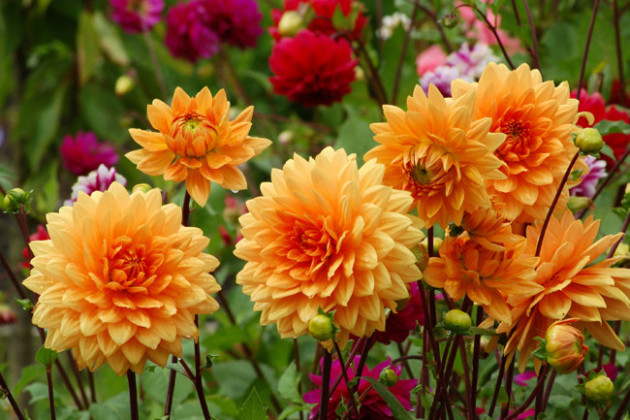
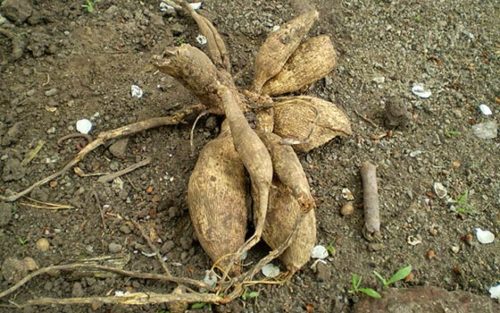
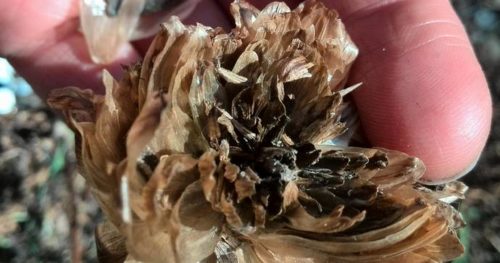
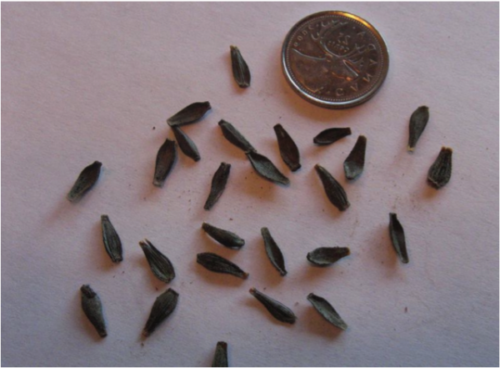
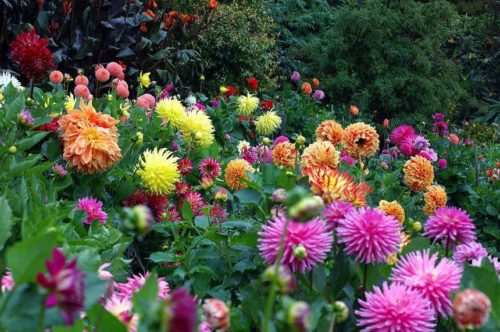

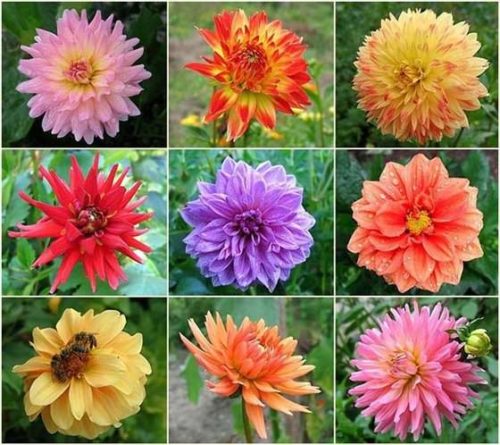
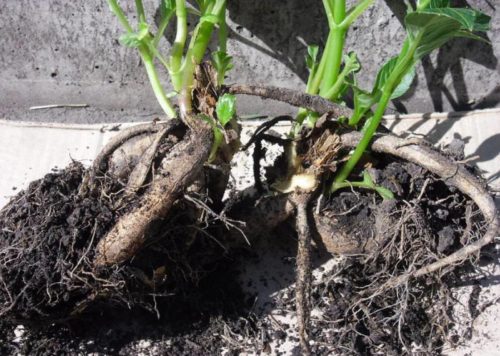
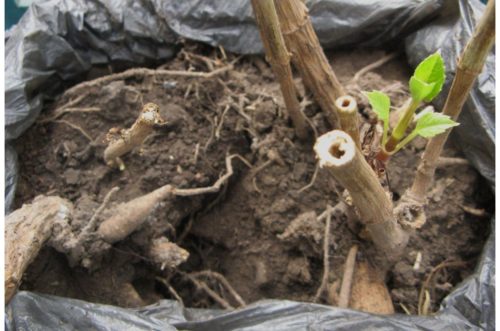
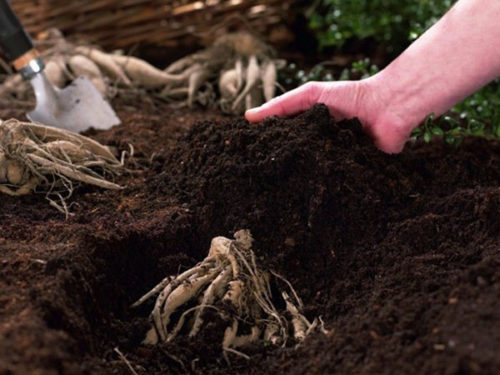
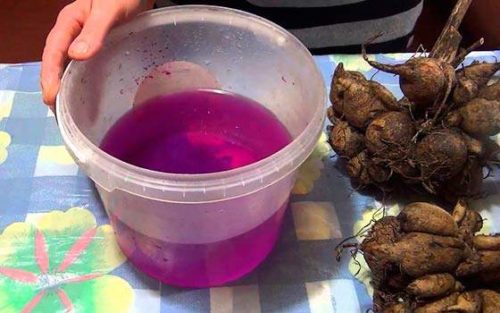
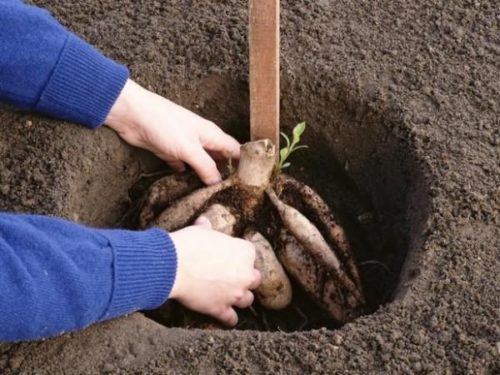
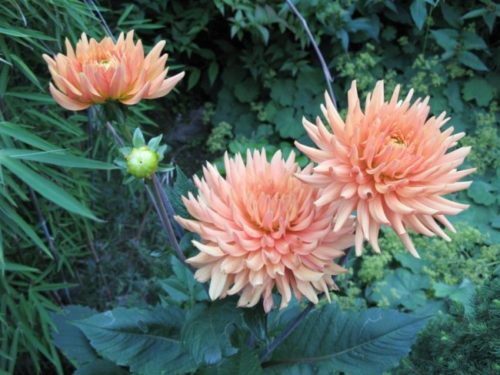
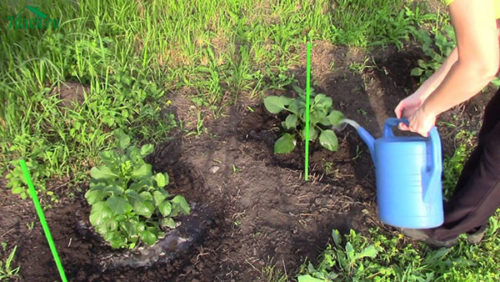

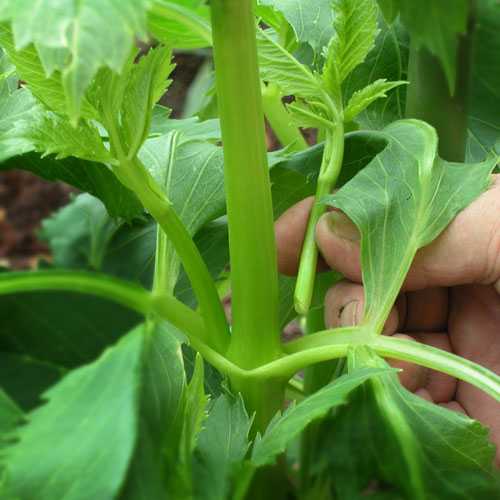
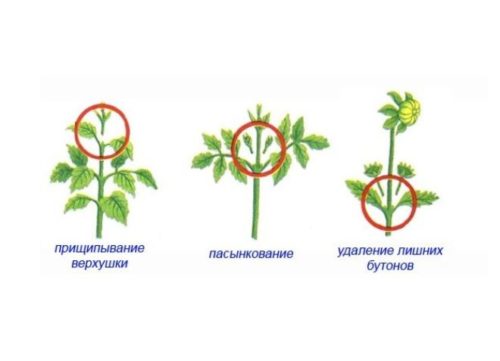
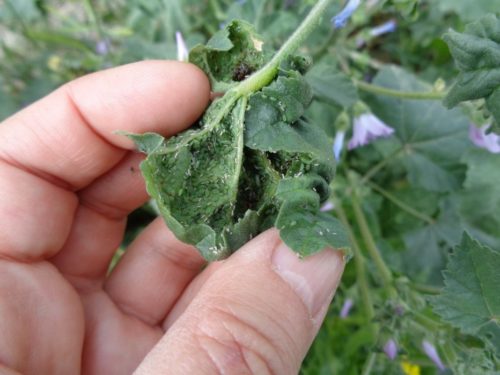
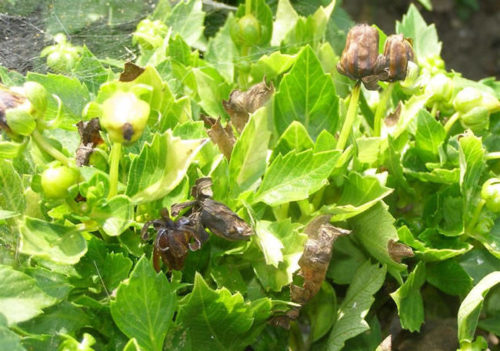

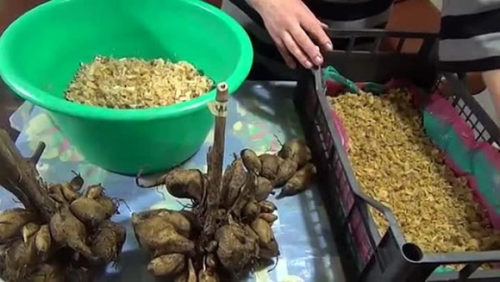
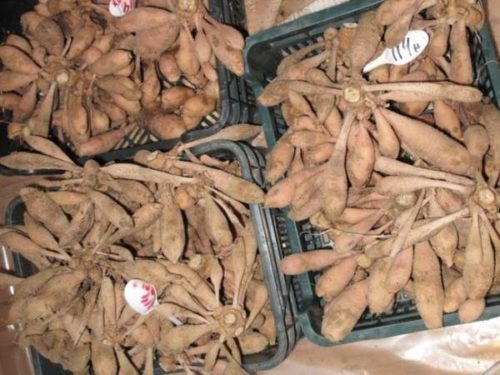
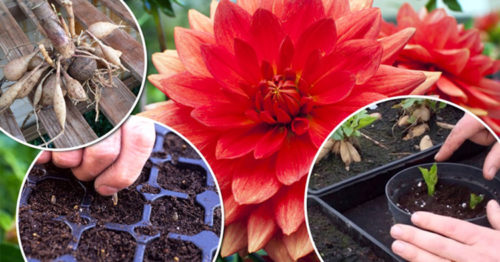
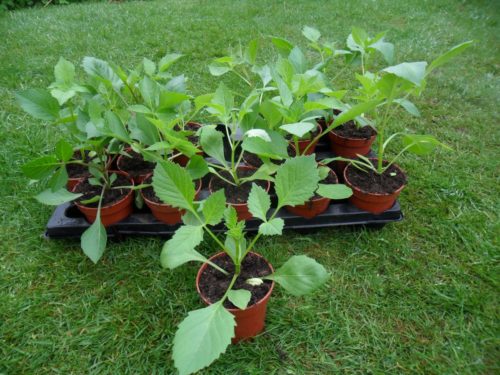
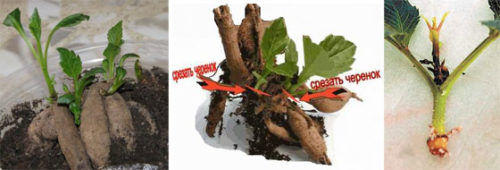

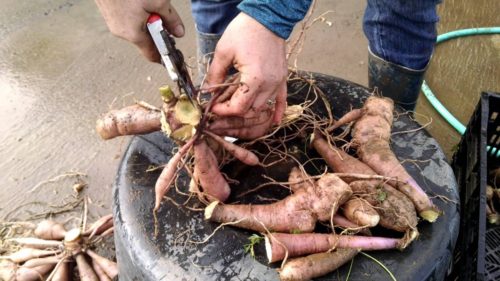
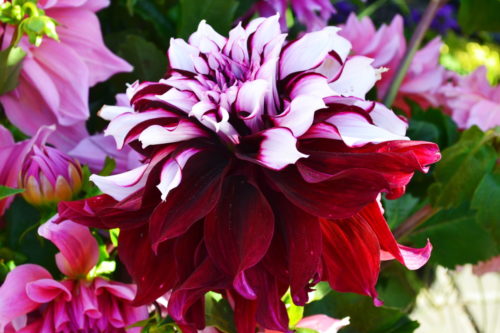
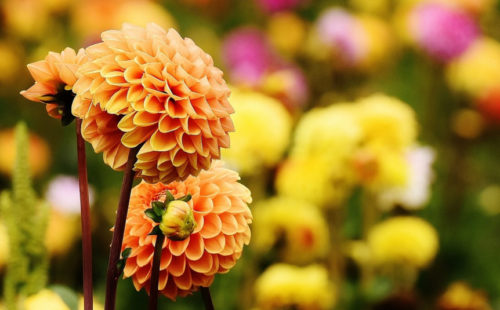
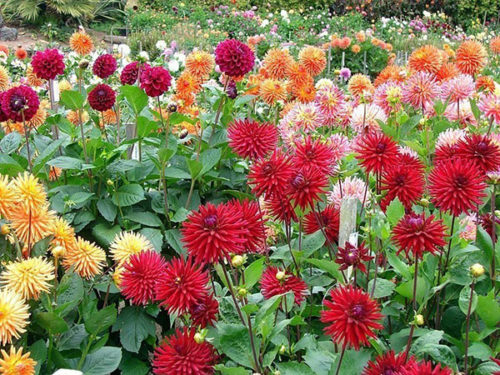













 Start a discussion ...
Start a discussion ...